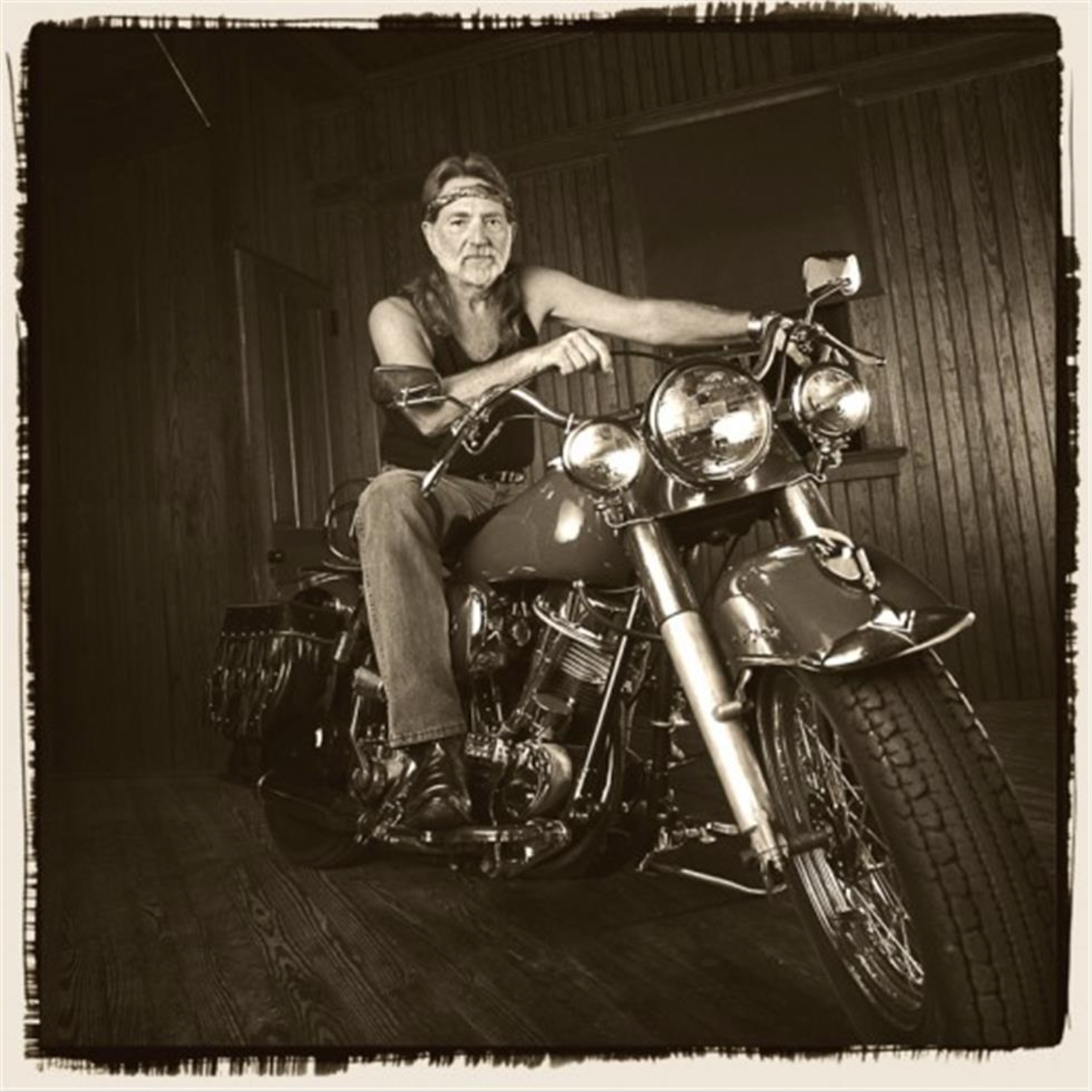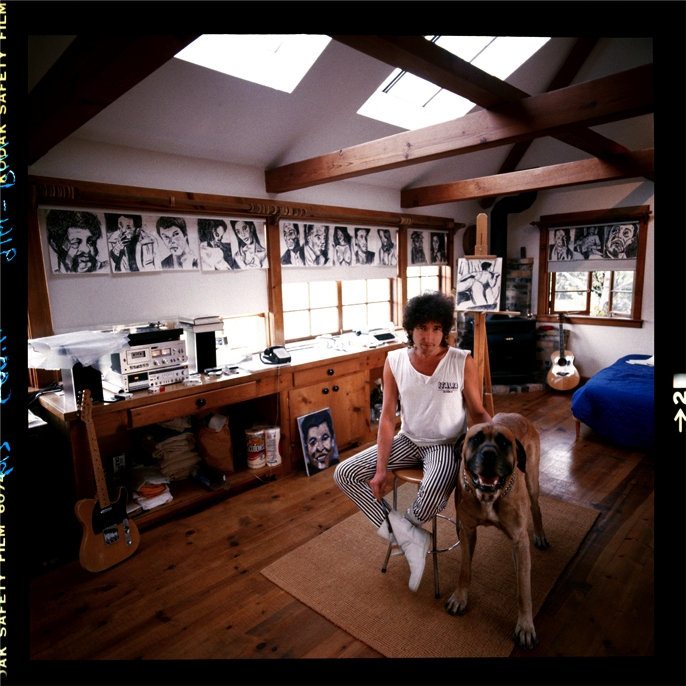David Michael Kennedy
Introduction to David’s work
These days it is rare for a photographer to combine the art of taking inspirational photographs with the art – or maybe we should say alchemy – of creating platinum/palladium prints. Not only is David Michael Kennedy an immensely talented photographer, he also is one of the acknowledged masters of the platinum/palladium printing process. David’s palladium prints have a special quality, with their distinctive handfinished edging and sepia tones, and are one of the most traditional, complex and enduring methods of photographic reproduction.
When you couple that background with the fact that David Michael Kennedy’s archives contain the bleak yet beautiful cover photograph used on Bruce Springsteen’s 1982 album Nebraska, together with important session photographs of Bruce made in 1982 to accompany the album, you have a heady cocktail for the collector of fine art photography.
As you scroll down the page you will see images from David’s sessions with Bruce Springsteen, Bob Dylan and Debbie Harry.
The platinum/palladium process
Platinum/Palladium prints are one of the most beautiful forms of photographic reproduction – but creating them in the darkroom is a highly complex and technical discipline. As David says himself in the 23 page technical guide that he has produced about the process: “Remember: what works for me may not work for you. Where you live, the time of year, humidity, the weather and what you ate for dinner will all affect your working methods and results. I kid you not.”
We wanted to give you an overview of the process, so that you can better understand what goes in to creating the beautiful end product. So here’s the science part. This is a contact printing process – in other words, the negative and paper onto which it is exposed are held in contact with each other. This requires the negative to be the same size as the final print, and so it is necessary to first make a negative in the correct size. David makes these enlarged negatives by hand in the wet darkroom, rather than digitally. He does this by making an inter-positive of the original negative, and from this positive image, the correct size negative is made.
David works only with palladium as he finds it gives him the most warmth: adding platinum makes the image too ‘cold’ for his taste. The palladium emulsion is coated onto the chosen paper, using a brush which gives rise to the distinctive brushstrokes that appear on the finished print. The paper is dried, and then David uses a vacuum press to hold the negative and paper in contact. A light source rich in UV radiation is used, and after exposure, the print is ready for the for the developer solution, clearing bath, final wash, drying, pressing and retouching. This is a lengthy labour intensive process, and at each stage there are multiple opportunities for errors, both of a human and non human kind.
As David says himself “The platinum/palladium process can at times seem more like magic than science.”
The Nebraska sessions with Bruce Springsteen
David tells the story behind the shoot, and how the cover photograph came to be:
“The cover shot was taken from the window of an old pick-up truck in the dead of winter. I was on a road trip, and my girlfriend’s brother was driving. We were in a super great snow storm and within minutes of this shot the storm hit hard and we were in total white out for hours. I thought that image might be my last! This was in the winter of 1975 and I had just finished a rough couple of months in New York City. I decided to take a road trip and have a bit of Rest and Relaxation. At that time I was doing a lot of fashion and advertising work as well as beginning to shoot covers but I really needed to get back to my roots and just do some images for me. So off on the road I went.”
“When Bruce was working on The Nebraska album he had an idea for a landscape in mind for the cover. He was working with Andy Klein as the art director on the cover. Andy was familiar with my portraits and she also was aware of my landscape work so she asked me to put together some of my landscapes to show to Bruce. He fell in love with the image (that became the cover) and knew it was right for the cover. The next step was for Bruce and I to meet to see if we connected and if he would feel good about my doing the photographs of him for the album.”
“I remember the day he stopped by the studio. I had already heard the rough mixes from the album and was blown away. I realized that this was a departure album for him and was quite honored that he wanted me to work with him on it. To this day it remains one of the most important covers I have done as well as one of the projects I am proudest to have been associated with. So Bruce arrived at my studio and we spent a few hours talking about the music, photography and life in general. By the end of the meeting we had come up with some strong concepts and everything jelled so he gave Andy the go ahead.”
“In June of 1982 we went to my ancestral summer home in upstate New York to do the shoot. It is an old family home with lots of country roads and a good “old fashioned” feel. He drove up in his old pick-up truck which we used for some of the photographs. I photographed him in the kitchen, then through the hallway looking into the music room of the old house, and in the old three storey barn/garage looking out the second story window. The photograph of Bruce sitting in the chair was also made in the garage, on the second floor where all the old horse buggies where housed.”
“The shoot consisted of Bruce, my assistant, my daughter Tymara and my ex-wife (and still good friend) Lucy. We spend the day wandering the back roads, the old house and barn, shooting with almost exclusively available light and very little production value. We were after more natural, true to life images and I think we both feel we achieved this. The experience was really more about two guys hanging out making photographs than a “photo shoot” Very low key. It was truly an amazing day just hanging out with The Boss and making fun natural images.”
Biography of David Michael Kennedy by Liz Kay
With several lifetimes of work under his belt, David Michael Kennedy is a remarkable mixture of New York tenacity and New Mexican frontiersman. His splendid palladium prints of southwest lands and skies, celebrities like Bob Dylan, Isaac Stern and Bruce Springsteen, and Native American Dancers from the Sioux Reservations in South Dakota and New Mexican Pueblos, have made Kennedy’s work sought after by collectors from around the world.
Working in New York in the 1970s and 80s, Kennedy developed a successful career in advertising, editorial, album cover and portrait photography. In 1987 he realized a long standing dream when he left New York and moved with his family to northern New Mexico where he began to produce an intensely personal and captivating body of work based on the spectrum of the southwest.
In March of 2004, disenchanted with the America he saw in the newspapers and on television, Kennedy headed out on a two year odyssey across the country, living and working in a vintage 1960 Airstream Travel Trailer, seeking out the real America. He kept to the old two-lane black tops in search of unspoiled landscapes, and people who had fled from or been bypassed by the tentacles of interstates and shopping malls. Kennedy has recently released a limited edition book, “On the Road” which documents this experience and what he found.
He now lives in a very rural ranch in New Mexico where he continues to work on his fine art projects while also creating a learning center revolving around “Master Classes”, in landscape, portraiture and Platinum/Palladium printing, as well as offering an artist in residency program for artists of various mediums who are looking for the solitude of the Southwest to work on a body of work.
“The shoot consisted of Bruce, my assistant, my daughter Tymara and my ex-wife (and still good friend) Lucy. We spend the day wandering the back roads, the old house and barn, shooting with almost exclusively available light and very little production value. We were after more natural, true to life images and I think we both feel we achieved this. The experience was really more about two guys hanging out making photographs than a “photo shoot” Very low key. It was truly an amazing day just hanging out with The Boss and making fun natural images.”















